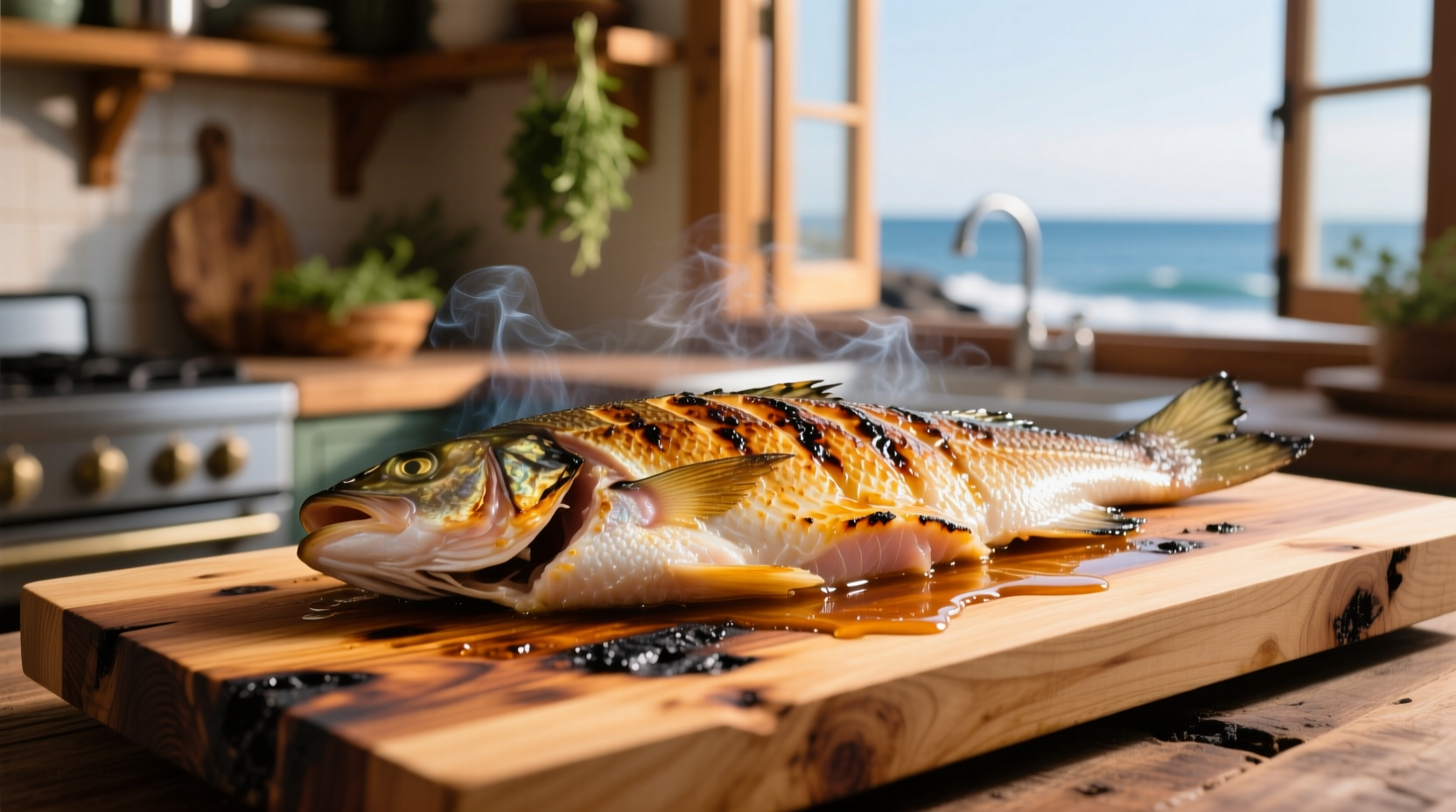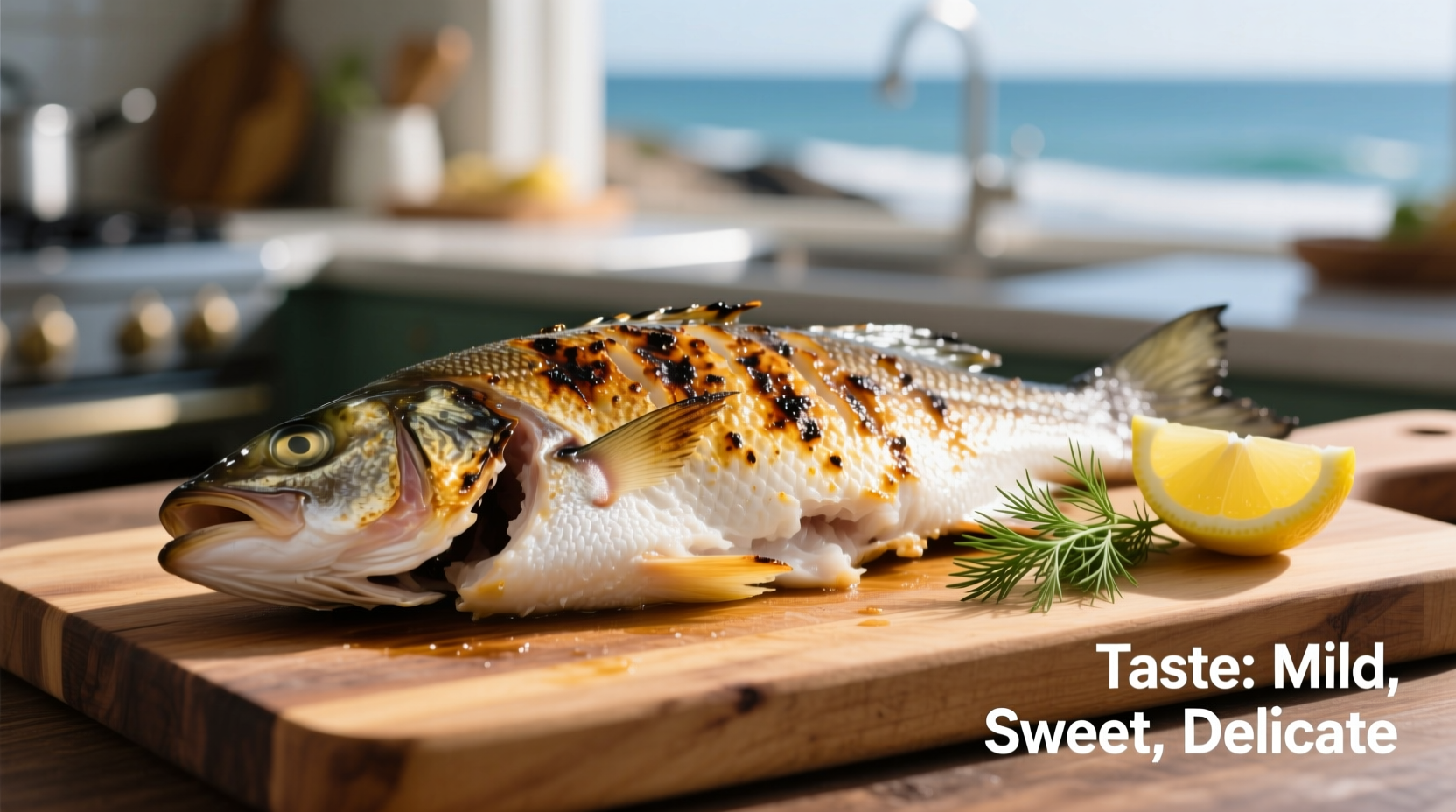If you've ever wondered what sets grouper apart from other popular white fish, you're not alone. As a chef who's worked with this versatile fish across different culinary settings—from fine dining establishments to coastal seafood markets—I've discovered that understanding grouper's unique flavor profile can transform your cooking experience. Whether you're planning a special dinner or simply expanding your seafood knowledge, knowing exactly what to expect from grouper can help you make better menu decisions and cooking choices.
Understanding Grouper's Flavor Profile
Grouper delivers a clean, mildly sweet taste that's less pronounced than salmon but more substantial than tilapia. This moderate flavor intensity makes it an excellent canvas for various seasonings and cooking techniques. When properly prepared, grouper offers a satisfying meaty texture with large, firm flakes that maintain their structure without becoming tough.
The aftertaste is notably clean—without the sometimes fishy finish you might encounter with less fresh seafood. This characteristic makes grouper particularly appealing to those who claim they "don't like fish," as its subtle flavor doesn't overwhelm the palate.
How Grouper Compares to Other Popular White Fish
Understanding how grouper stacks up against other common white fish helps set proper expectations for your cooking or dining experience. This comparison provides valuable context for selecting the right fish for your specific recipe or preference.
| Fish Type | Flavor Intensity | Texture Characteristics | Best Cooking Methods |
|---|---|---|---|
| Grouper | Moderate (mildly sweet) | Firm, meaty, large flakes | Grilling, baking, pan-searing |
| Cod | Mild | Soft, delicate, small flakes | Baking, poaching, frying |
| Halibut | Moderate to rich | Firm, meaty, large flakes | Grilling, roasting, pan-searing |
| Snapper | Mild to moderate | Firm, flaky | Grilling, baking, blackening |
| Mahi-Mahi | Moderate | Firm, dense, large flakes | Grilling, broiling, pan-searing |
Factors That Influence Grouper's Taste Experience
Several elements affect how grouper tastes and feels in your mouth. Recognizing these factors helps you select the best fish and prepare it properly for optimal flavor.
Species Variation Matters
Not all grouper taste identical. The two most common varieties in markets show distinct differences:
- Red Grouper: Features a slightly sweeter profile with more delicate flavor notes. Its flesh is lighter pink when raw, turning snow-white when cooked.
- Black Grouper: Offers a more robust flavor with earthier undertones. The flesh appears darker gray when raw but also cooks to pure white.
According to NOAA Fisheries, these differences stem from their distinct feeding patterns and habitats, with red grouper typically found in shallower waters feeding on crustaceans, while black grouper inhabit deeper zones with different prey availability (NOAA Fisheries Grouper Information).
Freshness Determines Flavor Quality
Freshness dramatically impacts grouper's taste. Properly handled grouper should have:
- Clear, bright eyes (if whole)
- Firm flesh that springs back when pressed
- A clean, ocean-like aroma (never fishy or ammonia-like)
- Bright, translucent appearance in fillets
Seafood Watch by the Monterey Bay Aquarium emphasizes that proper handling from catch to market preserves the fish's natural sweetness and prevents off-flavors that can develop when seafood isn't properly chilled (Seafood Watch Recommendations).
Best Cooking Methods to Enhance Grouper's Natural Flavor
Grouper's firm texture makes it exceptionally versatile in the kitchen. Unlike more delicate fish that fall apart easily, grouper holds its shape beautifully across various cooking techniques.
Grilling Grouper Successfully
Grilling brings out a subtle smokiness that complements grouper's natural sweetness. For best results:
- Use medium-high heat (about 375-400°F)
- Oil the fish and grill grates thoroughly
- Cook for 4-6 minutes per side depending on thickness
- Avoid flipping more than once to prevent flaking
Professional chefs often recommend placing grouper on a cedar plank when grilling to prevent sticking and add subtle woody notes that enhance rather than overpower the fish's delicate flavor.
Perfect Pan-Seared Grouper
For restaurant-quality grouper at home, pan-searing creates an irresistible crust while keeping the interior moist:
- Dry the fillets thoroughly with paper towels
- Season with salt and pepper (and optional light dusting of flour)
- Heat oil in heavy skillet until shimmering
- Cook undisturbed for 3-4 minutes until golden crust forms
- Flip and finish in oven if thick (about 130-135°F internal temperature)

Flavor Pairings That Complement Grouper
Grouper's moderate flavor profile makes it incredibly versatile with different flavor combinations. Unlike stronger fish that can overwhelm delicate accompaniments, grouper serves as an ideal canvas for various seasonings and sauces.
Citrus works exceptionally well with grouper—lemon, lime, and orange all enhance its natural sweetness without masking the fish's flavor. Mediterranean flavors like olives, capers, and tomatoes create balanced dishes, while Caribbean influences with mango, pineapple, and jerk seasoning bring out its subtle sweetness.
When seasoning grouper, remember that less is often more. A simple preparation with fresh herbs, citrus, and high-quality olive oil typically showcases grouper's flavor better than heavy sauces or intense spice rubs.
Common Mistakes That Ruin Grouper's Flavor
Even quality grouper can disappoint when prepared incorrectly. Avoid these common pitfalls:
- Overcooking - Grouper becomes dry and loses its delicate flavor when cooked beyond 140°F internal temperature
- Using overly aggressive seasonings - Strong spices like cayenne or excessive garlic can overwhelm grouper's subtle flavor
- Improper storage - Grouper should be cooked within 1-2 days of purchase for best flavor
- Skipping the resting period - Allow grilled or seared grouper to rest 3-5 minutes before serving to redistribute juices
According to culinary research from the Culinary Institute of America, the optimal internal temperature for grouper is 135-140°F, yielding perfectly cooked fish with moist, opaque flesh that flakes easily (Culinary Institute of America Seafood Guidelines).
When Grouper Might Not Be Your Best Choice
While versatile, grouper isn't ideal for every culinary application. Understanding its limitations helps set realistic expectations:
- Not recommended for ceviche due to its firm texture
- Less suitable for fish tacos compared to flakier fish like cod
- May disappoint if expecting the rich flavor of salmon or tuna
- Can be overpowered in strongly flavored stews or curries
For raw preparations, chefs typically select more delicate fish with higher fat content, while grouper shines in cooked applications where its firm texture can be fully appreciated.
FAQ: Understanding Grouper's Taste Profile
Does grouper taste fishy?
Properly fresh grouper should never taste fishy. It has a clean, mildly sweet flavor with subtle ocean notes. If your grouper tastes strongly fishy, it's likely not fresh. Fresh grouper should have a clean, ocean-like aroma without any ammonia or overly fishy smell.
How does red grouper compare to black grouper in taste?
Red grouper has a slightly sweeter, more delicate flavor profile with lighter notes, while black grouper offers a more robust, earthier taste. Both have firm textures, but red grouper's flesh is lighter pink when raw, turning snow-white when cooked, whereas black grouper appears darker gray before cooking.
What's the best way to season grouper to enhance its natural flavor?
Simple preparations work best with grouper. Try lemon or lime juice, fresh herbs like dill or parsley, and high-quality olive oil. Mediterranean flavors (olives, capers, tomatoes) and Caribbean influences (mango, pineapple, mild jerk seasoning) complement grouper's natural sweetness without overwhelming it. Avoid heavy spice rubs that can mask its delicate flavor.
Why does my cooked grouper taste dry?
Dry grouper typically results from overcooking. Grouper should reach an internal temperature of 135-140°F for optimal moisture. Cooking beyond this point causes the proteins to tighten excessively, squeezing out moisture. Always use a thermometer and allow the fish to rest 3-5 minutes after cooking to redistribute juices.
Can I substitute grouper for cod in recipes?
You can substitute grouper for cod in most cooked recipes, but expect some differences. Grouper has a firmer texture and slightly stronger flavor than cod. It works well in baked, grilled, or pan-seared applications but may not be ideal for fish and chips where cod's flakier texture is preferred. Adjust cooking times slightly as grouper holds together better than cod.











 浙公网安备
33010002000092号
浙公网安备
33010002000092号 浙B2-20120091-4
浙B2-20120091-4